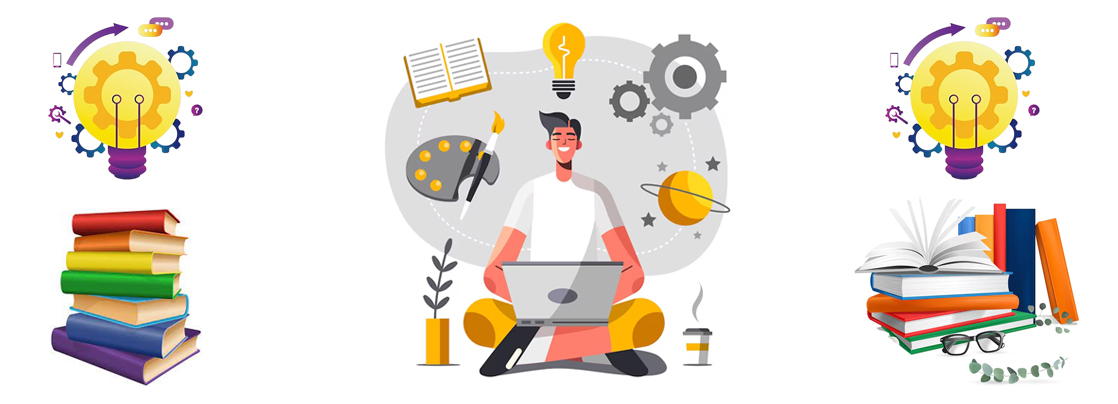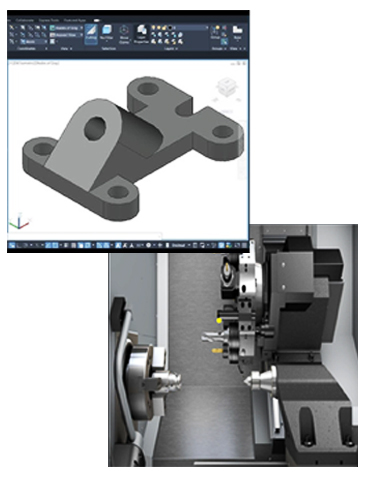
Title: Design Thinking – A Human-Centred Approach to Innovation
You’ve probably seen products that look great but don’t solve any real problem. Or apps that are feature-rich but confusing to use. That’s where Design Thinking steps in—a structured yet creative method to build practical, user-friendly solutions.
Design thinking is a problem-solving approach that focuses on understanding the user's needs, redefining the problem, and creating innovative solutions through testing and iteration. It's used by leading companies like Apple, Google, and IDEO to build products people actually want.
Let us now understand how design thinking transforms ideas into real-world solutions.
What is Design Thinking?
Design thinking follows five main stages:
- Empathise – Understand the user’s experience and emotions.
- Define – Clearly frame the problem.
- Ideate – Brainstorm multiple solutions.
- Prototype – Build a working model.
- Test – Gather feedback and refine the solution.
This user-centric approach helps in creating solutions that are not only innovative but also usable.
How Design Thinking Differs from Traditional Problem Solving
Traditional problem-solving tends to be linear: define the problem, analyse it, and then create a solution. Design thinking, on the other hand, is iterative. It allows teams to cycle between problem and solution spaces, test ideas early, and adapt quickly.
In traditional models, technology and business goals often come first. But in Design Thinking, the user comes first and the technology and feasibility are explored only after the human need is well understood.
Real-World Examples
- Healthcare: A hospital redesigned its patient intake system using design thinking, reducing wait times by 60%.
- Education: Teachers created more engaging lessons by empathising with student challenges.
- E-commerce: Online shopping platforms improved the checkout experience by focusing on user behaviour and feedback.
Tools Used in Design Thinking
To make the process smoother, several tools are commonly used during each phase of Design Thinking:
- Empathy maps and user journey maps to visualise user experience
- Affinity diagrams for clustering insights from research
- Sketching and storyboarding to visualise ideas
- Low-fidelity prototypes like paper mockups
- User testing platforms for collecting structured feedback
These tools help teams stay focused and extract the most value at every stage.
Advantages of Design Thinking
- User-focused: Solutions are based on real user needs, not assumptions.
- Innovative: Encourages out-of-the-box ideas and creativity.
- Iterative: Early testing avoids costly mistakes later in the process.
- Cross-functional: Works well across design, engineering, and marketing teams.
- Flexible: Can be applied to any industry from product design to business strategy.
Disadvantages of Design Thinking
- Time-consuming: Deep user research and testing can take time.
- Not always structured: Without proper guidance, teams may get lost in brainstorming.
- May ignore technical limits: Focus on user needs can sometimes overlook practical constraints.
Applications in Industry
- Product Design: Designing gadgets that are functional and intuitive.
- UX/UI Design: Improving app interfaces by understanding user pain points.
- Business Strategy: Creating customer-centric services and policies.
- Public Services: Redesigning systems like transport or healthcare for better user experience.
- Start-ups: Finding product-market fit through continuous user feedback.
Conclusion
Design Thinking isn’t just for designers—it’s a mindset for solving complex problems in a human-centred way. By focusing on empathy, collaboration, and testing, leads to solutions that are both creative and effective.
In a world where users have endless choices, the key to standing out is building what people need, not just what we can. And that’s exactly what Design Thinking helps us do.







